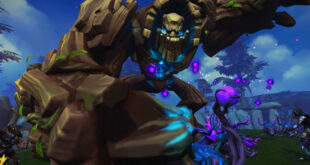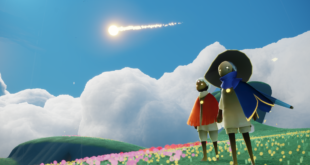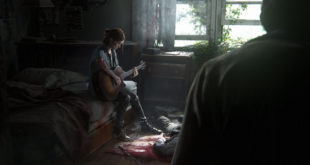The Last of Us marked a massive leap forward not only graphically, but also in terms of video game narrative.
We sat down with the visionary writer and creative director for the title, Neil Druckmann, to get his side of the story – and see what’s next
When I was nine years old, I found myself so enamoured by Crash Bandicoot that I sent a letter to the studio behind it – Naughty Dog – asking whether the firm would take me on.
It sounds like a shot in the dark and, for me, it was – I never heard back. But for Neil Druckmann, his passion and persistence landed him the role that would go on to make him a gaming storytelling star.
I played the first Jak [and Daxter] game and was blown away, and just happened to run into [Naughty Dog co-founder] Jason Rubin,” he recalls. I started hounding him and eventually he gave me an internship on Jak 3 – I think he just got annoyed.”
In less than a year Druckmann was promoted to the role of writer and designer for Naughty Dog’s first next-gen title – Uncharted: Drake’s Fortune. The game was a hit, and Druckmann was made lead designer for its critically-acclaimed follow-up, Uncharted 2: Among Thieves, in 2009.
Despite Uncharted 2’s massive success, it is Druckmann’s next project, The Last of Us, that many will recognise as his magnum opus. The game told the story of a teenage girl, Ellie, and a grisled middle-aged man, Joel, who bond as they struggle to survive in a post-apocalyptic America. The dark and touching tale struck a chord with players, winning over 200 Game of the Year awards from various publications.
The Last of Us’ brutal and desolate world was a far shout from the light tone of Uncharted. But Druckmann argues that, despite the gulf in tone between the two franchises, without the hijinks of Nathan Drake, Joel and Ellie’s adventure might not have come to light.
I don’t want to downplay what we’ve done in Uncharted – it is a character-driven story – but with Uncharted we were trying to capture the summer movie blockbuster, to say ‘Here’s this kind of pulp action adventure, and we’re going to put you in it, we’re going to put you on the stake, and you’re going to feel like you’re this hero’,” he says definitively. I hate using the words ‘light-heartened franchise’, but it is somewhat light-hearted – it never gets too heavy, and that’s part of the fun of it.
With The Last of Us the approach was: ‘Okay, we’ve learnt all this stuff with Uncharted, now how do we apply all these things to more serious and personal themes?’”
He adds that, in contrast with many games on the market, The Last of Us was designed with an engaging and thematically complex story in mind – a challenge that the team itself saw as perhaps its greatest to date.
Our agenda from the get-go was to construct an experience where everything we do, whether it’s story or gameplay or music or art, has to come back to this relationship between this teenager and middle-aged murderer and the bond and love that they develop between each other. And we were like: ‘Can we, through a series of interactive sequences, get the player to love these characters the way that they love each other? The theme of being a parent and having this irrational love where you would do anything for your child – can we make the player feel that?’”
He laughs. It sounds insane and ridiculous and unachievable – but that was what we were shooting for the whole time with The Last of Us.
That’s not to say that there haven’t been good stories in the past,” he quickly adds, as if defending against a backlash from irate Half-Life 2 and BioShock evangelists. I grew up playing adventure games; those are some of the strongest narrative memories I have from my childhood.”
But now, he says, story-telling is becoming an essential part of the way big-budget games are created, rather than an afterthought.
There’s something happening, at least in the triple-A space – and some of it is in part due to the success of The Last of Us – that when you integrate story into your pipeline early, you get better results with your narrative than just trying to bring a writer in the second half – or even the last few months – of a game and saying: ‘Here are cool, fun gameplay set pieces that you’ve got to tie together’,” he muses.
With that, you get the result you’d expect, which is that it’s a fun romp, but the story isn’t really compelling and the characters aren’t engaging or honest or real. So, at least on the development side of things, people are trying to shift their pipeline and how they incorporate story into their development.”
"Game creators are trying to shift their pipeline and how they incorporate story into their development."
Neil Druckmann, Naughty Dog
Programmer, designer, writer and director – Druckmann seems to have done it all. And his unique odyssey through the multiple aspects of game creation is likely to be his greatest strength, helping him envision franchises that unite narrative poignancy and entertaining gameplay.
It’s a huge leg up,” he admits modestly. When I’m talking to a programmer we can talk about Ellie as a state machine, as weird as that sounds, like states she could take, and how we use dialogue to trigger different things. Sometimes it’s difficult to jump between the two worlds (writing and programming), but that’s often the best way to tie them together.
Bruce Straley, my directing partner, is similar in that he is very technically-minded and he comes from art, so he’s not only thinking from a gameplay perspective, he’s thinking from an art direction, end-system, and we’re all speaking the same language. You have to be a jack-of-all-trades so you can communicate with each one of the disciplines to bring it closer to that original vision.”
This close communication allowed the team to fully consider a number of approaches when working on the game that would become The Last of Us.
CO-OP CHALLENGES
Early on, before we had settled on The Last of Us, we debated doing a multiplayer narrative experience, and discussed the challenges,” Druckmann reveals. It is solvable, but the challenge of having a multiplayer narrative is that you always have to have something happening for each one of those characters.
The Last of Us would be an almost impossible story to tell in multiplayer because there are situations where Joel is on his own. The story always has to have multiple characters that are active, and that really limits the kinds of stories you can tell.”
Ultimately, he explains, having a virtual character evoked a more human reaction from players.
You’re playing with someone who is making decisions, who has interesting things to say based on the context that you’re in and is reacting to your behaviour,” Druckmann says. As early on as you’re murdering people, Ellie is horrified by it and is reacting to it, but over the course of the game those reactions go away as she becomes desensitised. Through AI and how we record and write her, she has a sort of arc that plays out in an interactive space. Then it’s animation – how she follows you in fluid ways, how she path-fin

 MCV/DEVELOP News, events, research and jobs from the games industry
MCV/DEVELOP News, events, research and jobs from the games industry



